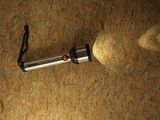- Thu Apr 19, 2012 9:07 am
#354947
hello.
i am trying to use ies spotlights in my scenes. it works fine with using small spheres for illuminating the room.
my problem is to visualize the light source itself. The small shining sphere hasn't the look of the spotlight...
how can i achieve that the spotlight looks real ?
thanks for your help,
mojo
i am trying to use ies spotlights in my scenes. it works fine with using small spheres for illuminating the room.
my problem is to visualize the light source itself. The small shining sphere hasn't the look of the spotlight...
how can i achieve that the spotlight looks real ?
thanks for your help,
mojo


 - By Gaspare Buonsante 20200309160206
- By Gaspare Buonsante 20200309160206